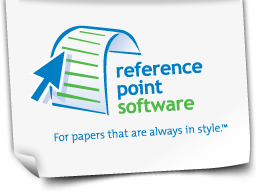The Correct Use of Paragraphs in Your College Paper
Well-written paragraphs are the building blocks of an effective college paper. To achieve high marks from your professor, you need to do more than incorporate an extensive vocabulary with flawless spelling and grammar. Your ability to communicate thoughts and ideas successfully to your reader will be severely compromised if you donΓÇÖt know how to use paragraphs correctly.
What Is a Paragraph?
As a general rule, a well-written paragraph contains a key topic sentence that states a primary purpose with other related sentences that support that specific idea. Even if the paragraph doesnΓÇÖt have an explicit topic sentence, it should be easy to summarize what the paragraph is about. You can make several points in a single paragraph as long as they relate to the overall topic within. One of the most common mistakes people make is to introduce too many unrelated or indirectly related ideas into a paragraph. This will weaken the overarching topic and possibly confuse readers.
Developing the Paragraph
Developing a paragraph requires finding the balance between discussing a topic in sufficient depth without becoming verbose. Some ways you can develop paragraphs in your college paper are by analysis or description, citing data, using quotes from other sources or referring to other evidence such as testimony, examples, and statistics. It is important to use the correct formatting style appropriate for the type of college paper that youΓÇÖre writing when citing references for any quotes or other types of supporting information.
When to Start a New Paragraph
Your college paper should always begin with an introductory paragraph or two and finish with a paragraph or two for your conclusion. When you write the body of your college paper, you typically will start a new paragraph any time that you develop a new idea, a new point of an extended idea or contrasting differences such as points in a debate or in an argument. If you are developing a complex or an extended idea that is turning into a long paragraph, find a way to make a logical break for your reader by starting a new paragraph. Most people find long paragraphs uninviting and difficult to read.
Using Transitional Words
Paragraphs help you organize and present your ideas, so they flow from one to the next. To help improve the flow of your paper, include appropriate transitional words and phrases to identify the relationship between the preceding and following paragraphs. The list of transitional words is substantial, and includes words and phrases such as: also, and, as well, besides, equally important, finally, too, similarly, obviously, at the same time, conversely, as an illustration, in other words, afterward, finally, accordingly, meanwhile, soon, subsequently, finally, in brief, in conclusion.
In formal writing, transitional words and phrases are followed by a comma. Make sure that you avoid overuse of the same transitional phrases.
The correct use of paragraphs will help you stay focused in the early stages as you draft and revise your college paper. Once you have completed your final draft, edit your paper with objectivity. Assess if your paragraphs are well constructed and identify if you adhere to all of the guidelines for your assigned formatting style.
David Plaut is the founder of Reference Point Software (RPS). RPS offers a complete suite of easy-to-use formatting template products featuring MLA and APA style templates, freeing up time to focus on substance while ensuring formatting accuracy. 
Reference Point Software is not associated with, endorsed by, or affiliated with the American Psychological Association (APA) or with the Modern Language Association (MLA).
